Helpful FISH ORIGAMI!
If you like fish, then this information is for you. Daniel Gritzer, recipe creator, author, and former food editor for Food & Wine magazine, shared a restaurant trick for cooking fillets of salmon and other fish perfectly every single time. This showed up in my www.seriouseats.com newsletter and I was riveted on every word, as I’ve always struggled turning out delicious fish. If you can relate, do read on.
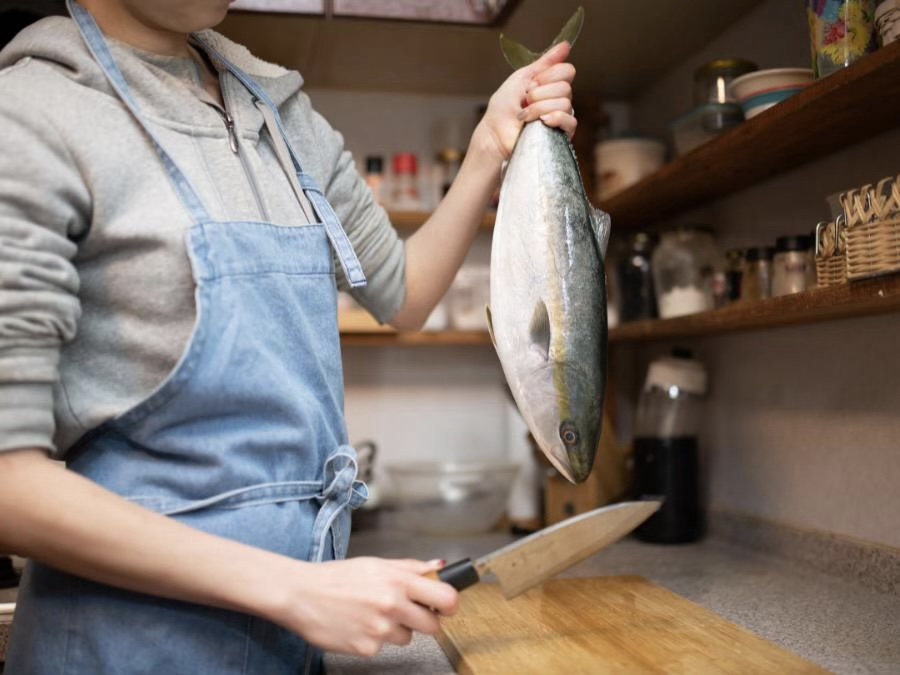
Daniel first explains: “If you want your food evenly cooked, it usually needs to start out evenly shaped. That's why we try to weigh and size our burger patties uniformly, portion our steaks in consistent thicknesses, and tie our roasts into nice, tight cylinders.
“But nature didn't design itself for our cooking convenience, and some foods don't lend themselves to reliably even sizes and shapes. Just take a look at a fin fish fillet, for instance.”
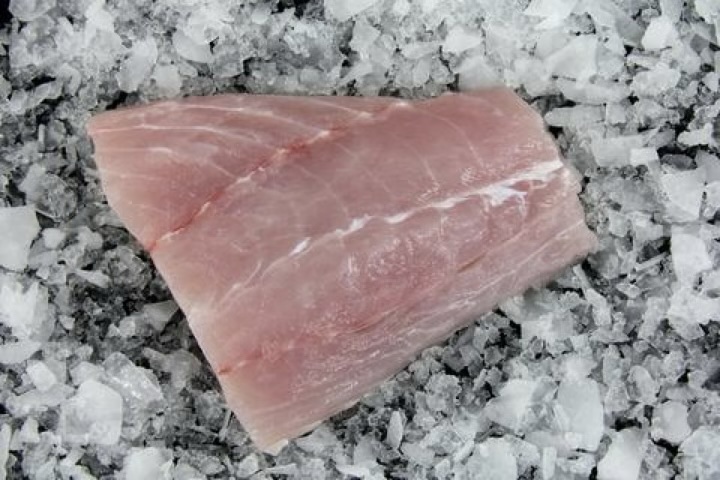
If you’re into cooking fish, then you’ve probably noticed that fish tapers in two directions: from the thick head-end down to the skinny tail, and from the meatier dorsal portion down to the thin flap of belly meat. What, then, can you do to guarantee an even cook?
Daniel says it’s actually easy, if you know how to do a little fish origami. Consider a snapper fillet: If you want to divide it into three serving portions of about six ounces each, you're going to end up with very differently shaped pieces. First, there's the nice, thick chunk from the head-end at the far left—that's a prime piece. Next, there's the center-cut portion; still a good thickness. But boy, that tail piece on the right is nothing like the others. Serve that to one of your guests and they'll look from their scrawny, very likely overcooked fillet to the plump and hefty ones on their neighbors' plates with a feeling of deep resentment.
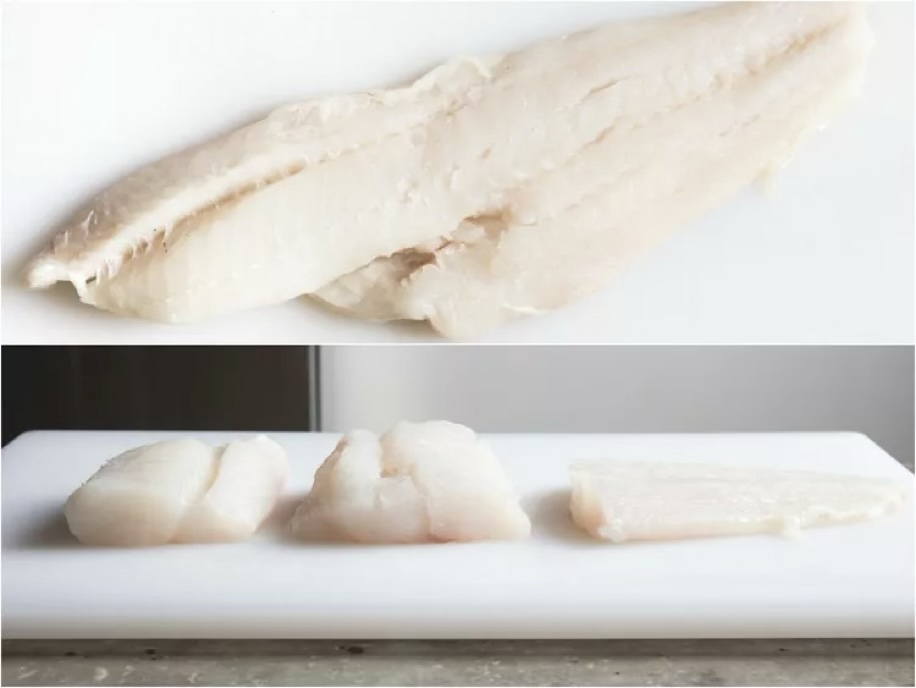
Plus, the uneven size of these portions makes cooking them together especially difficult. That thin tail piece is going to cook through within a minute or two, then dry out while the other pieces are still just getting started. (Ask me how I know this…)
The solution? Daniel’s fish origami: Begin by scoring the tail piece crosswise, nearly, but not fully, slicing through. Then fold it under itself. It won't have exactly the same dimensions as the other two, but it'll be a lot closer in size and cook at a much more similar rate, too. Exactly where you make your cut is something you have to eyeball by deciding what portion of the fillet needs to be doubled over itself to create the most even piece of fish throughout. It's rarely right in the middle.
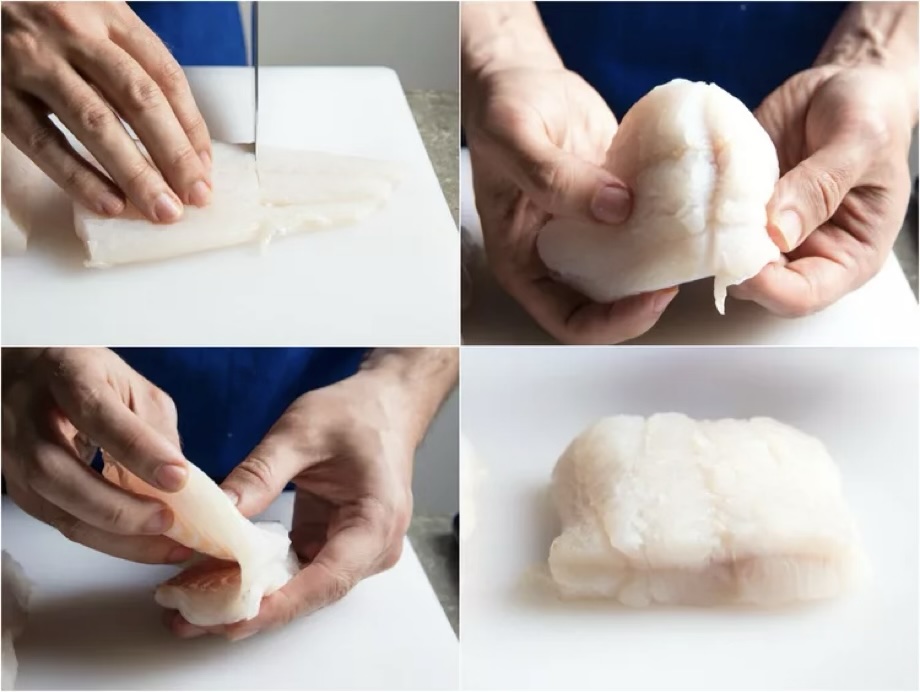
This trick works for salmon, too, where the belly flaps are much thinner than the rest of the fillet. That's not necessarily a huge problem, since the belly is also fattier, meaning it'll remain juicy even once it hits ‘well done.’ But still, it can look nicer not to have it flopping off to the side of the fillet.
Once again, just score and fold and your problem is solved.
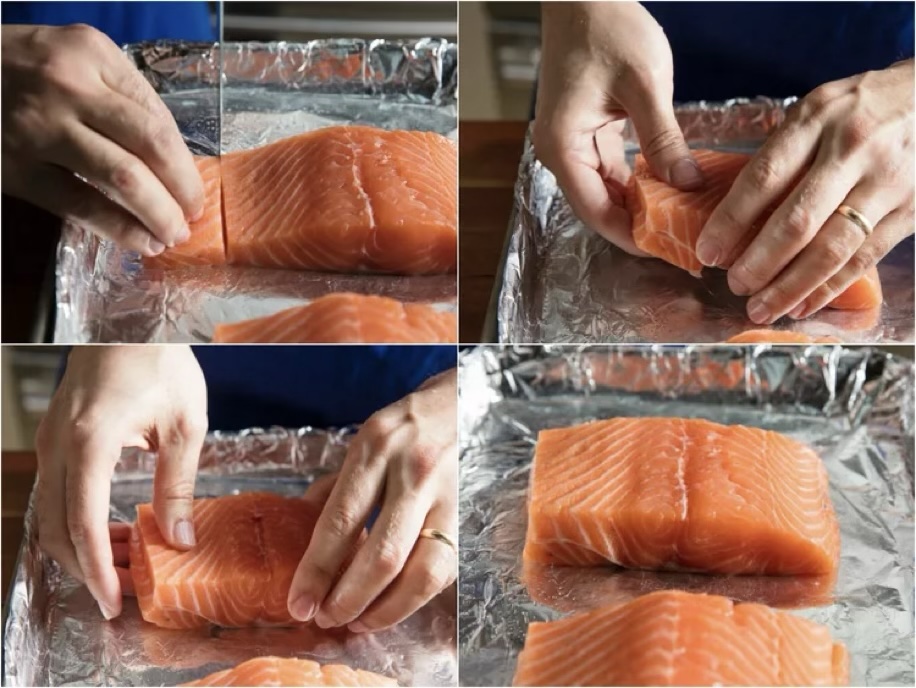
Daniel’s last bit of instruction is this: “One important caveat, though, this doesn't work well with skin-on fish, since it would create a steamy little pocket of skin inside the fold. And if there's one thing people want even less than a scraggly piece of overcooked fish, it's a steamy skin pocket.”
After all, nature is nature, and skin was never meant to go on the inside of anything.
Helpful information, yes? Now I’ll finish with a non-related thought (because I can and because this is really important):
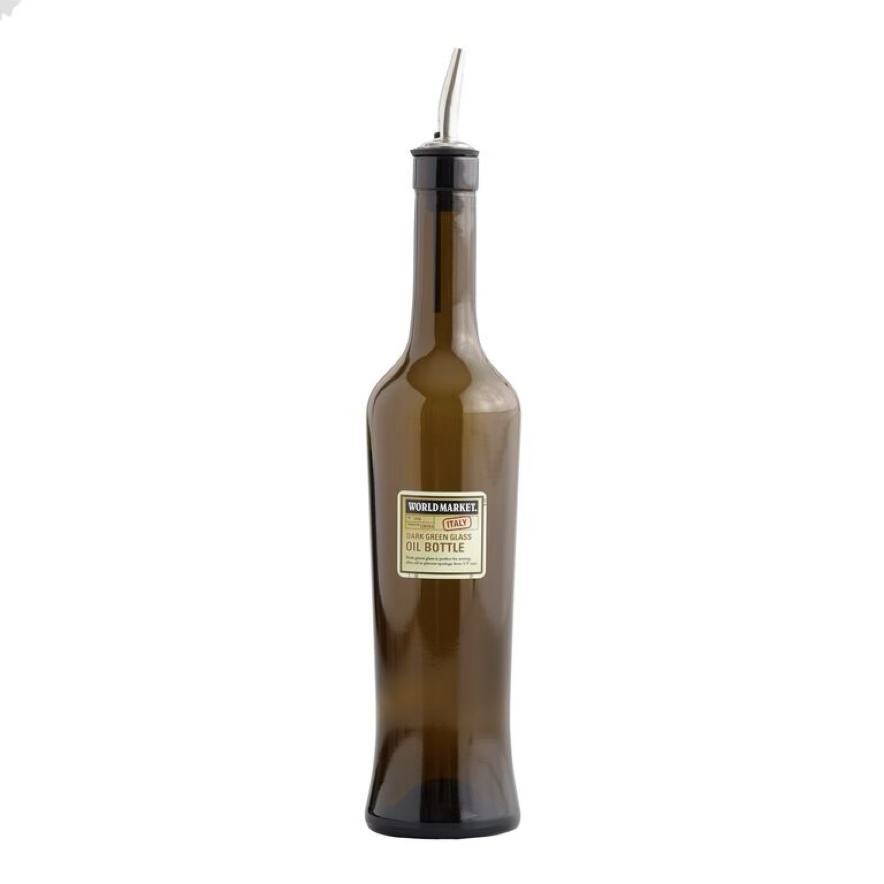
TIP FOR THE MONTH. Did you know that you should always store olive oil in a dark bottle to prevent oxidation? If you can, find a dark glass bottle if you oil doesn’t already come in one, then transfer your olive oil to it.
And I’ll close with a very delicious recipe for salmon fillets. This recipe calls for frozen fillets, so it won’t work for the origami approach. But now that we know how to cut our fish, let’s be sure to try it out next time. (This recipe is excellent for other fish as well.)
PAN-SEARED ALASKA SALAMON WITH PISTACHIO-PARSLEY PESTO
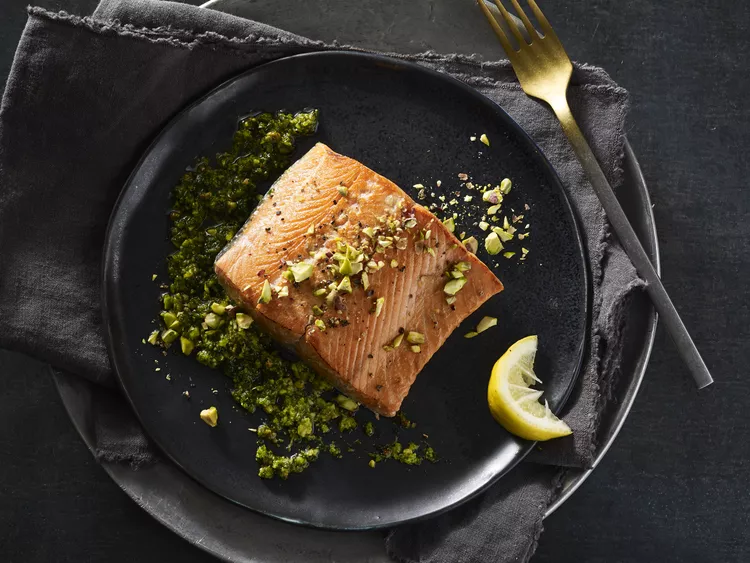
1/2 cup (3 ounces) plus 2 tablespoons shelled roasted pistachio nuts
1/2 cup (1/2 ounce) firmly packed parsley leaves and stems
1/4 cup finely grated Parmesan-Reggiano (.3 oz; 9g)
1 clove garlic
1/4 cup plus 2 teaspoons extra virgin olive oil divided
1 tablespoon freshly squeezed lemon juice
kosher salt to taste
freshly ground black pepper to taste
4 6 ounce Alaska salmon fillets, frozen
1 lemon quartered
Directions:
1. Roughly chop 2 tablespoons pistachios and set aside.
2. Put remaining 1/2 cup of pistachios in food processor along with parsley, Parmigiano-Reggiano, and garlic, and pulse until roughly chopped. With the machine running, gradually pour in 1/4 cup of olive oil and lemon juice, and blend until smooth. Season to taste with salt, pepper, and more lemon juice, if desired. Set aside. Pesto can be made and refrigerated up to a week and frozen for 3 months; defrost if necessary and bring back to room temperature before using.
3. Heat large pan over medium-high heat. Run frozen Alaska salmon fillets under cold water to remove any ice glaze and pat dry with a paper towel. Brush both sides with oil. Arrange in an even layer in pan, skin-side up (if using skin-on fillets) and cook, uncovered, 3-4 minutes, until browned. Flip and season with salt and pepper. Cover and reduce heat to medium, then cook for an additional 6-8 minutes until lightly browned on both sides and cooked through. Salmon should be opaque and flake easily with a fork. For thicker portions, finish in an oven preheated to 400∞F (use an ovenproof pan).
4. Put each fillet on a plate and spoon about 2 tablespoons pistachio-parsley pesto over each. Sprinkle reserved chopped pistachios over top and serve with a lemon wedge.
2. Put remaining 1/2 cup of pistachios in food processor along with parsley, Parmigiano-Reggiano, and garlic, and pulse until roughly chopped. With the machine running, gradually pour in 1/4 cup of olive oil and lemon juice, and blend until smooth. Season to taste with salt, pepper, and more lemon juice, if desired. Set aside. Pesto can be made and refrigerated up to a week and frozen for 3 months; defrost if necessary and bring back to room temperature before using.
3. Heat large pan over medium-high heat. Run frozen Alaska salmon fillets under cold water to remove any ice glaze and pat dry with a paper towel. Brush both sides with oil. Arrange in an even layer in pan, skin-side up (if using skin-on fillets) and cook, uncovered, 3-4 minutes, until browned. Flip and season with salt and pepper. Cover and reduce heat to medium, then cook for an additional 6-8 minutes until lightly browned on both sides and cooked through. Salmon should be opaque and flake easily with a fork. For thicker portions, finish in an oven preheated to 400∞F (use an ovenproof pan).
4. Put each fillet on a plate and spoon about 2 tablespoons pistachio-parsley pesto over each. Sprinkle reserved chopped pistachios over top and serve with a lemon wedge.
Recipe formatted with the Cook'n Recipe Software from DVO Enterprises.
 Alice Osborne
Alice Osborne
DVO Newsletter Contributor since 2006
Email the author! alice@dvo.com
Sources:
- www.docksidehhi.com
- www.seriouseats.com
- www.fabulousfish.com
- www.worldmarket.com
